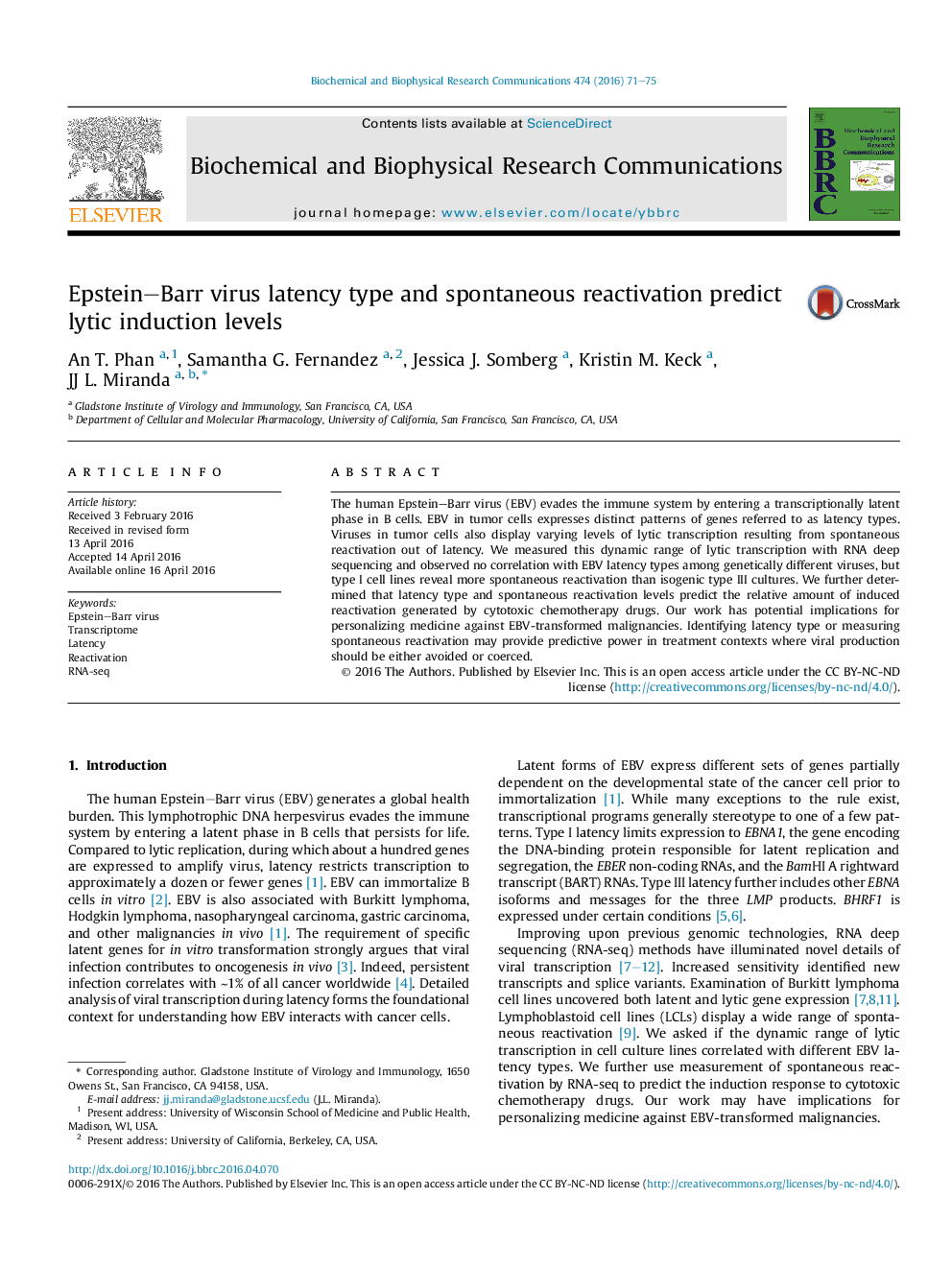| Article ID | Journal | Published Year | Pages | File Type |
|---|---|---|---|---|
| 10748541 | Biochemical and Biophysical Research Communications | 2016 | 5 Pages |
Abstract
The human Epstein-Barr virus (EBV) evades the immune system by entering a transcriptionally latent phase in B cells. EBV in tumor cells expresses distinct patterns of genes referred to as latency types. Viruses in tumor cells also display varying levels of lytic transcription resulting from spontaneous reactivation out of latency. We measured this dynamic range of lytic transcription with RNA deep sequencing and observed no correlation with EBV latency types among genetically different viruses, but type I cell lines reveal more spontaneous reactivation than isogenic type III cultures. We further determined that latency type and spontaneous reactivation levels predict the relative amount of induced reactivation generated by cytotoxic chemotherapy drugs. Our work has potential implications for personalizing medicine against EBV-transformed malignancies. Identifying latency type or measuring spontaneous reactivation may provide predictive power in treatment contexts where viral production should be either avoided or coerced.
Related Topics
Life Sciences
Biochemistry, Genetics and Molecular Biology
Biochemistry
Authors
An T. Phan, Samantha G. Fernandez, Jessica J. Somberg, Kristin M. Keck, JJ L. Miranda,
